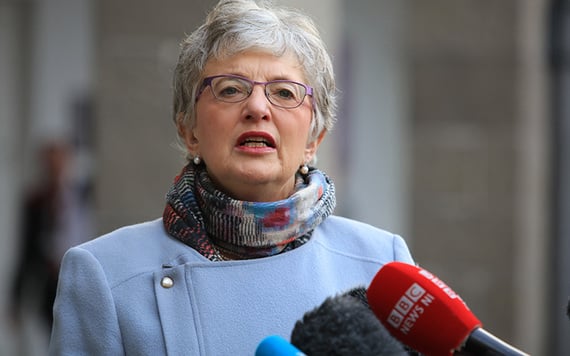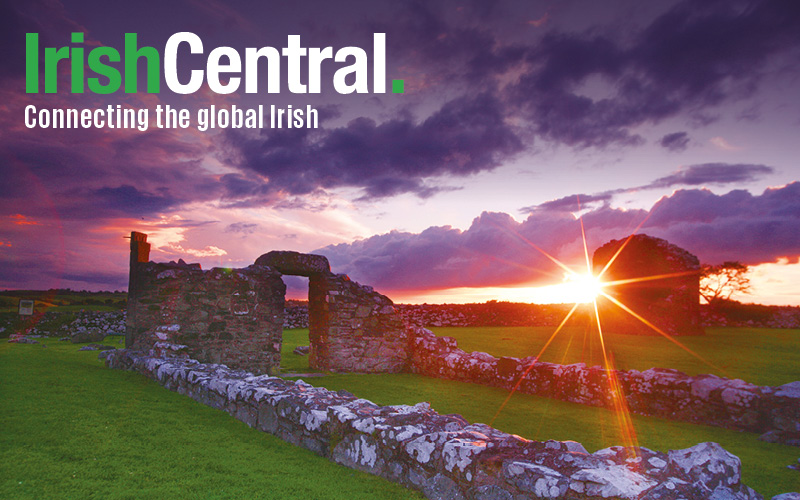Irish journalist who broke the story on Tuam Mother and Baby Home calls on Irish America to investigate illegal Irish adoptions to the US.
Newly released letters sent in the 1950s between the controversial St. Patrick’s Guild Adoption Society in Dublin and the Dublin Archbishop have given some insight into the practice of foreign adoptions out of Ireland in the mid-20th century; a practice that may have led to thousands of Americans today not knowing that they are Irish, or that they were adopted.
“Hitherto intending adopters - and those who had already adopted - hoped that there would be some form of legal adoption which would make the position of the child and themselves more secure. Now that they know this is out of the question they seem to have lost heart in matter,” wrote Sister Frances Elizabeth to Revd C. Mangan on May 10, 1951, in the contents of a letter revealed for the first time in newly published book “My Name is Bridget: The Untold Story of Bridget Dolan and the Tuam Mother and Baby Home” by Irish journalist Alison O’Reilly.
Read more: Nuns told this Maine cop his Irish mother was dead, he discovered the truth

A previously unpublished letter from Sister Frances Elizabeth to Revd C. Mangan on May 10, 1951, acquired by Irish journalist Alison O'Reilly.

A previously unpublished letter from Sister Frances Elizabeth to Revd C. Mangan on May 10, 1951, acquired by Irish journalist Alison O'Reilly.
"We even have had some children returned to us when the adopting couple saw that the child would have to know later on that he (or she) did not really belong to them,” continued Sister Elizabeth, referring to the then ongoing attempts to introduce an official Adoption Act in Ireland that would legislate for legal adoptions.
The main fear, it seemed, for couples in adopting from the society was that a new Act would allow in the future for “the child to be claimed by their natural mother.”
These fears ran deep for couples adopting from the US, in particular, and Sister Elizabeth can be seen to bemoan the now lack of eligible adoptive parents applying from America.
“The Americans have been a sad loss to our children,” she writes.
“For almost twelve months no child had gone to the US and we think with longing of those grand Catholic homes which offered such love and security to our babes.”

Irish Minister for Children and Youth Affairs Katherine Zappone. Image: RollingNews.ie.
On Tuesday, Irish Minister for Children Katherine Zappone announced that Tusla, the Irish child and family agency, had confirmed 126 cases of illegal and wrongly registered adoptions from the same St. Patrick’s Guild taking place between 1946 and 1969. Tusla revealed that as many as 79 people in these cases may be "entirely unaware of the circumstances of their birth" and that their adoptive parents were illegally registered on their birth certificates as their birth parents.
For Irish journalist Alison O’Reilly, however, Tuesday’s announcement came as no surprise after years of working with Mother and Baby Home activist Anna Corrigan and Galway historian Catherine Corless. In 2014 these three women broke the tragic story of the 796 children potentially buried unceremoniously in the septic tank on the grounds of Tuam Mother and Baby Home. O'Reilly has also worked to assist Corrigan - whose mother was a resident and lost two sons in Tuam - in attempting to discover the final fate of her two older brothers.
Read more: Illegal adoptions to US mean many Americans will never know they came from Ireland
Forensic Science Ireland report on Tuam Babies excavation: "Most of the remains were in an old septic tank but some located outside the tank. Bodies decomposed down on top of one another" @ShameOfIreland @IzzyKamikaze @Donal_OKeeffe @boucherhayes @FintanOToolbox #MyNameIsBridget pic.twitter.com/xdtdtNyOvk
— MyNameIsBridget (@mynamesisbridge) April 22, 2018
In May 2018, O’Reilly released “My Name is Bridget: The Untold Story of Bridget Dolan and the Tuam Mother and Baby Home,” the result of four years of investigative work in exposing the treatment of “fallen” women and “illegitimate” children in Ireland’s Mother and Baby Homes. The book also looks toward a further investigation into Irish adoption societies such as St Patrick’s Guild who may have facilitated the adoption to US couples of Irish children falsely registered as dead.
It is believed that St. Patrick’s Guild alone may have organized as many as 2,000 unregistered and illegal adoptions, while adoptions to the US carried out in this manner throughout all the various adoption societies could amount to the thousands.
Already in May 2018, IrishCentral covered the story of former Maine police officer Kevin Battle, who was denied access to his mother by Irish Catholic nuns and told she was dead. His mother, in turn, was told her son died and Battle was, unfortunately, never to discover the truth until she truly passed away.
“My Name is Bridget” also includes the histories of Desmond Lally and Michael Byrne, the stories of two men now living in America who were born into Irish Mother and Baby Homes.
“There's another 20 years of stories in America that we haven't even seen. We know about them but we need to be in America doing them,” O’Reilly told IrishCentral.

"My Name is Bridget" by Alison O'Reilly.
“There's a whole other world to this story and its the American side,” she continued, adding that there have been repeated requests made to the New York Mayor’s Office for information but none have received a reply.
“It's a conversation that really needs to get going in the States amongst the Irish community and for questions to be asked over there. Those children had to have been brought into America. There has to be a paper trail somewhere.”
As with the 79 out of 126 cases identified by Tusla this week, many of these Irish adopted children may not ever have known that they were born into a Mother and Baby Home with their adopted parents listed as their birth parents. There is also the possibility that other names or even dates of birth could have been altered on the cert, as Anna Corrigan believes happened to her brother William.
Read more: Tuam babies adopted in large numbers to US, says historian who broke the scandal
Corrigan’s mother Bridget is the main subject of “My Name is Bridget” and it was she who first brought the Tuam story to O’Reilly’s attention back in 2014. It wasn’t until after her mother’s death that Corrigan learned she was not an only child but had two older brothers. They were born and were, at least said, to have died in Tuam Mother and Baby Home where her mother Bridget Dolan was made a resident when she twice became pregnant out of wedlock.
Corrigan opened a criminal investigation with Irish police into the death of her eldest brother John, believing the young baby boy, who was born perfectly healthy, to have been the victim of malnutrition and mistreatment in the home. She believes it was this which led to his death at just a year and a half.
The Dubliner also has a missing person’s file open on her second brother William, for whom there is a death certificate saying that he died in the home but who has no burial record. This has lead Corrigan to believe that he was either illegally adopted to the US or that he is among the 796 buried in the Tuam septic tank.
If among those Irish children now present in the US as an adult, William may never know that Bridget Dolan was his mother.
"State whether married or unmarried mother, or if child is legitimate or illegitimate or orphan or deserted child". Bridget Dolan's admission form to the Tuam mother and baby home. William was illegally adopted to the US in 1950. He was marked as "dead" and his dob was changed. pic.twitter.com/Vb5HTWOADh
— MyNameIsBridget (@mynamesisbridge) May 27, 2018
“I think that's the saddest part of it all,” said O’Reilly.
“There are people completely oblivious. They may even know instinctively, or somewhere in their psyche, that they don't really feel connected to their families.
“This should have been sorted out 20 years ago, 30 years ago. I mean they should have been given their files at the time,” O’Reilly said of the current government-arranged Commission of Investigation looking into the Mother and Baby Homes.
“St. Patrick's Guild handed over papers three years ago and we're only being told yesterday [Tuesday] about the illegal adoptions but we already knew anyway. There's nothing new there for us, as journalists, because we know.
“I'm sure it's news to a lot of other people and it's very thought-provoking but these things needed to be dealt with yesterday. When you're waiting to find out who you are - a basic human right is to know who you are - and you're not given that information, can you even imagine what it's like for people in that position? It's horrific.”
Do you have an American story from the Irish Mother and Baby Homes? You can email us at [email protected].
*"My Name is Bridget" was chosen as IrishCentral's May Book of the Month. You can purchase a print copy of the book here or in ebook format at this link. If you're interested in learning more about IrishCentral's Book Club, you can join our Facebook group or emails us at [email protected]. *




Comments